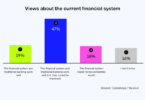The Enterprise Ethereum Alliance’s (EEA) has
published a report outlining blockchain applications for the telecommunications industry. The report aims to encourage blockchain adoption by highlighting the potential for six use cases.
Industry players such as T-Mobile, SK Telecom, KDDI and Clear contributed to the paper, as well as Ethereum development company ConsenSys.
Ron Resnick, EEA executive director, says the report is “one of the more comprehensive sets of blockchain use cases for the telecom industry that you will come across.”
Article continues …
Want the full story? Pro subscribers get complete articles, exclusive industry analysis, and early access to legislative updates that keep you ahead of the competition. Join the professionals who are choosing deeper insights over surface level news.







